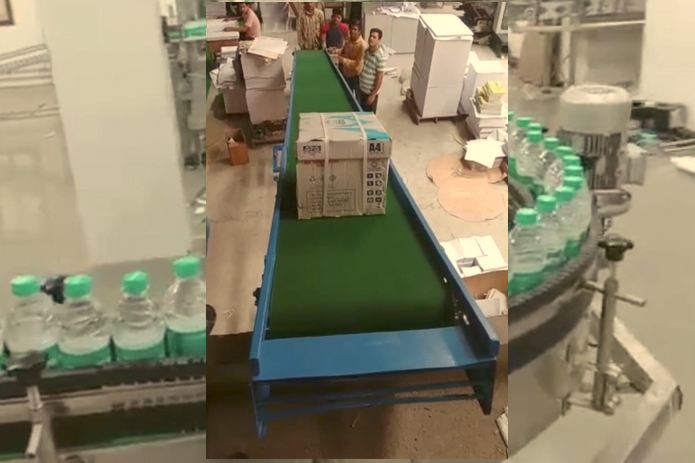

Samarth Engineering displays an advanced manufacturing, supplying and exporting facility with a modern and latest infrastructure for producing high quality conveyors. We fabricate varied type of conveyors such as belt, air, chain conveyors and other associated components and parts. We take pride in our comprehensive expertise and the smooth execution of all our projects related to manufacture of best quality products. We are continually dedicated to enhancing the quality of products, aligning with the expectations of our valued customers. We have a proficient team of technical workers, experienced in their respective fields due to which we have earned a good reputation in the market as well as our customers are satisfied with our services.
A buffer table is a component used in conveyor systems to temporarily store or accumulate products or materials. It acts as a buffer between different stages of the production, allowing for smoother and efficient operations.
Here is an overview of buffer tables, their applications, and advantages:
A buffer table is a designated area along a conveyor system where products or materials can be temporarily stored before being further processed or transported. Its primary purpose is to regulate the flow of items, preventing bottlenecks and ensuring continuous operation.
Buffer table find applications in various industries and processes including manufacturing, distribution centers, logistics, packaging and assembly lines. They are particularly useful in situations where there is a mismatch in the speed or capacity of different stages of production or when there are intermittent pauses in downstream processes.
1. mooth material flow: buffer table help maintain a steady flow of products, preventing disruptions caused by variations in production rates or delays in downstream processes.
2.Increased throughput: By providing temporary storage, buffer table allow upstream processes to continue operating even if downstream processes are temporarily halted or slowed down.
3.Flexibility: buffer table enables better synchronization between different stages of production, allowing for more flexibility in managing production rates and reducing the risk of overloading or under utilizing downstream equipment.
4.Error reduction: buffer table can help minimize errors and product damage by providing a controlled environment for product accumulation, reducing the likelihood of collisions or mishandling.
5.Improved efficiency: By optimizing material flow and reducing downtime, buffer table contribute to overall operational efficiency, leading to cost savings and increased productivity.
6.Space utilization: buffer table can be designed to make efficient use of available space, allowing for compact storage and maximizing the utilization of the footprints of the conveyor system.
It's important to note that the specific advantages and applications of buffer tables may vary depending on the industry, process, and specific requirements of the conveyor system. Customization options are available to tailor buffer tables to the unique needs of different applications.